Can I Eat Purslane? Edible Weeds
Today it’s all about can I eat Purslane? Yes, you can. Weeds are a gardener’s worst nightmare, but did you know that some of those weeds you are plucking may be edible? Purslane can be found growing all over the U.S.
It is one of those hardy weeds that will spring up in gardens or planters, and can even be found along the side of the road. So, I asked myself, can I eat purslane? Find out below!
Can I Eat Purslane?
Purslane is one of those super annoying weeds that can grow just about anywhere. You will most likely find it growing through the cracks in the sidewalk or your driveway.
These pesky little weeds don’t go away without a fight, so if you can’t beat them you might as well eat them!
Purslane is perfectly safe to eat! In fact, it is sometimes used in place of spinach or other salad leaves.
Keep It Away from Cats
Although purslane is edible for humans, it can be deadly for your pet. Cats can develop something called purslane poisoning. The prognosis for a cat or kitten who consumes purslane will determine how much of the plant the cat or kitten ate.
Typically, a cat will not eat much because the plant itself gives a painful sensation in the cat’s mouth when they try to eat it. So, if you have a cat, you will want to keep him or her away from the purslane.
Health Benefits of Purslane
Not only have we known the health benefits of purslane for hundreds of years, but the National Center for Biotechnology Information has proven that these health benefits exist.
In fact, purslane has a long history of being used as traditional medicine. Additionally, it is high in so many nutrients. A 100-gram portion contains the following nutrients:
- Vitamin A (from beta-carotene): 26% of the DV. (DV: Daily Value)
- Vitamin C: 35% of the DV.
- Magnesium: 17% of the DV.
- Manganese: 15% of the DV.
- Potassium: 14% of the DV.
- Iron: 11% of the DV.
- Calcium: 7% of the RDI.
- It also contains small amounts of vitamins B1, B2, B3, folate, copper, and phosphorus.
- Omega 3 fatty acids
If those health benefits don’t make you want to eat weeds, I don’t know what wil!
What Purslane Should I Pick?
You can eat purslane right from your yard or garden. If you choose to eat it from your yard, you will want to wash it very well first.
Additionally, avoid using pesticides or herbicides in your yard. Here are a few more tips to consider when picking purslane:
- DO NOT harvest any purslane that is close to a road. They can pick up pollution from cars.
- NEVER harvest any purslane from an industrial lot, or any space where past pollution might have been an issue.
- Do NOT harvest purslane from a yard where chemicals like pesticides and fertilizers have been used.
How to Harvest Purslane
Once you have found your purslane, it is important to know how to harvest it. First, you want to make sure that it has not been sprayed with any chemicals or pesticides.
Then, make sure it wasn’t in an area that was continuously “watered” by animals.
To harvest your purslane, I recommend using scissors to cut what you need. This way you can leave the rest to grow.
You can pull it out by the roots, but I just simply cut them at the stems like you would a flower.
How to Eat Purslane
You can treat purslane in the same way you would any other leafy green in your recipes. Once you harvest your purslane, you will want to make sure the plant is washed very carefully. Purslane can hold soil in its little crevices, so you may need to use your sink sprayer to get it all off.
With all that being said, here are a few ways you can eat purslane:
- Toss it into a salad. Purslane is often tossed into salads or added to soups in the Mediterranean area.
- Chop purslane into an omelette. In Mexico, purslane is an addition to omelettes much like spinach is here.
- Steam and eat. You can steam purslane like you would other veggies. Steam it for 4-5 minutes then serve with salt and a little butter.
- Eat it with cucumber. If you like sliced cucumbers with oil and vinegar dressing, try adding purslane to the mix as well.
- Mix it in a smoothie. One way to get all the veggies we need is to toss them into a smoothie. Purslane mixes well into any smoothie.
Recipes that Use Purslane
If you have a bunch of purslane and aren’t really sure how to use it, there are many recipes that include it. Here are just a few:
- Fingerling Potato and Purslane Salad
- Steamed Purslane Recipe
- Pickled Purslane
- Tomato, Cucumber, and Purslane Salad
- Greek Purslane Yogurt Dip
- Purslane Stew
How to Store Purslane
You can store purslane both in the refrigerator or in the freezer. To store your purslane right after you have picked it, you can plop it into a ziplock bag and put it straight in the refrigerator or cooler.
It will keep fresh for about a week in the refrigerator. If you want to store purslane for a longer period of time, you can place the ziplock bag in the freezer instead.
Can I Eat Purslane? Other Weeds You Can Eat
Along with purslane, there are a variety of other weeds that are actually edible. Check them out, below!
#1 Red Clover
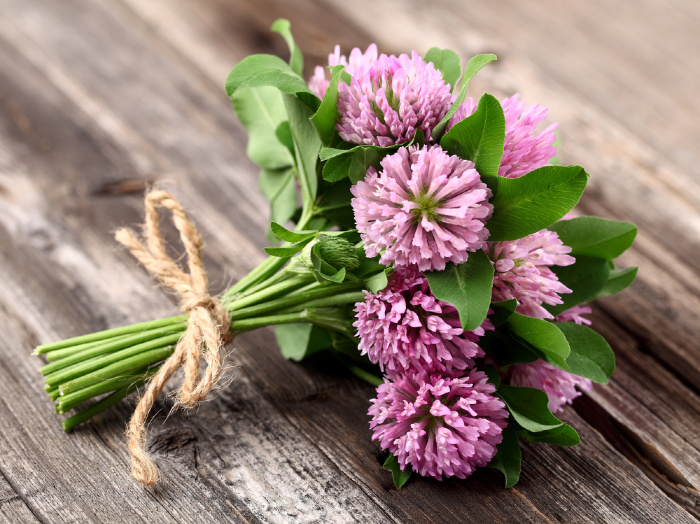
The red clover is not the traditional 4-leaf clover. Instead, it is the pinkish/purplish flower that covers the fields in color. The flowers and leaves can be eaten in salad and other dishes. If you haven’t yet, check out my post “Can I Eat Red Clover” for more details.
#2 Dandelions
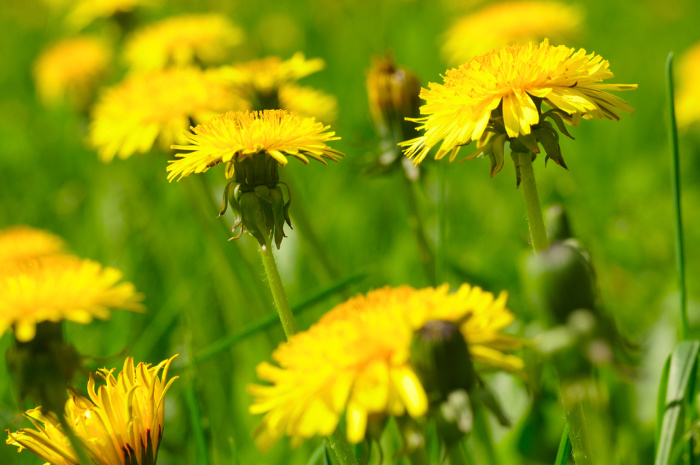
If you haven’t checked out my post “Can I Eat Dandelions,” you should. It tells you everything you need to know, from health benefits to harvesting and cooking.
#3 Lambs Quarters
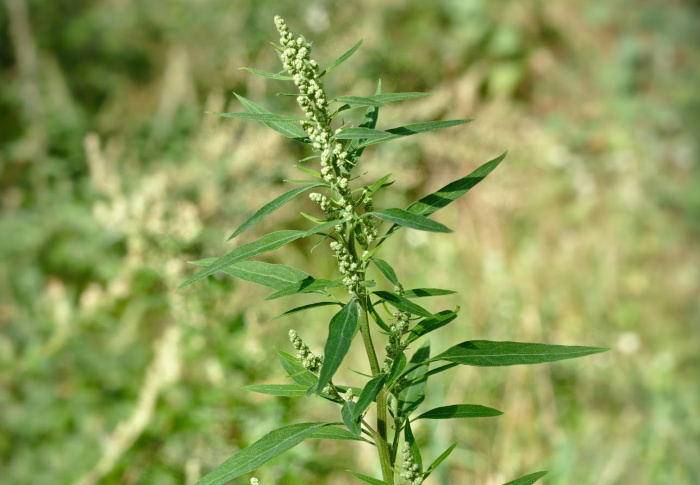
Lamb’s Quarters is also known as Goosefoot. It can be eaten raw in any veggie dish or salad. Additionally, it can be sauteed or steamed and used in any recipe that calls for spinach.
The seeds of this plant look like quinoa and can be harvested and eaten as well.
#4 Plantain (Plantago Major)
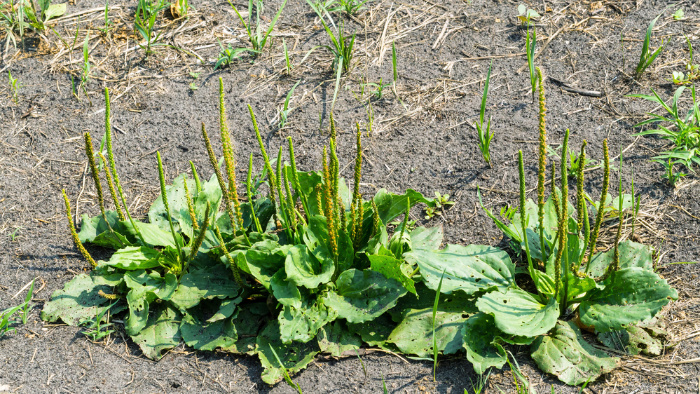
Not to be confused with the tropical fruit, this plantain is actually a green leafy weed that is edible. It can be used topically to soothe burns, stings, rashes, and wounds, as well as eaten.
The leaves can be eaten raw, steamed, boiled, or sauteed. The seeds of plantain can be cooked like a grain or ground into a four.
#5 Chickweed
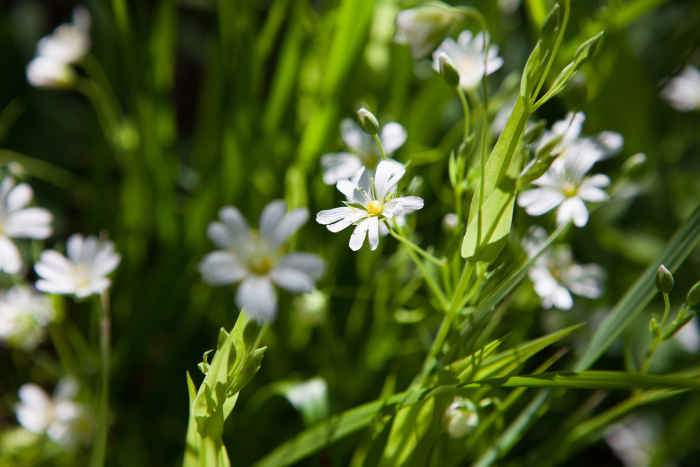
This garden weed can be harvested for both food and medicine. The chickweed leaves, stems, and flowers are eaten both raw or cooked. It can be eaten much like you would eat spinach.
#6 Mallow
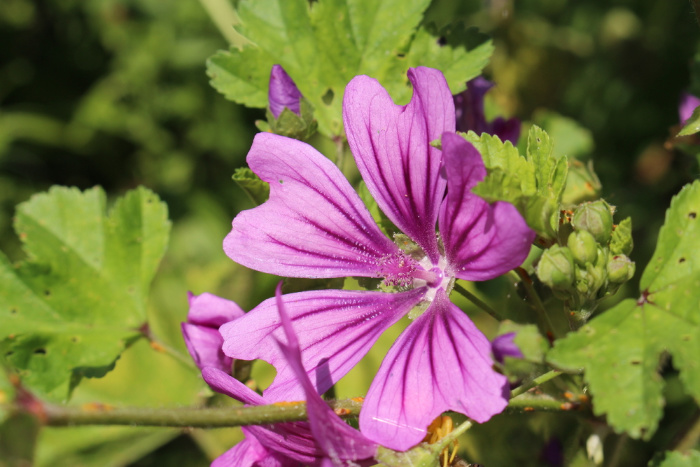
Mallow, or malva, is also known as cheeseweed because it is shaped like seed pods. It is found in lawns or garden beds throughout the United States. The leaves, as well as the seed pods, are edible raw or cooked.
#7 Wild Amaranth
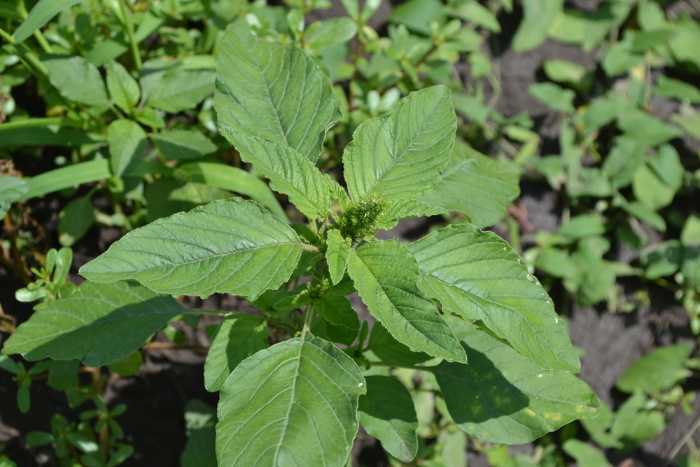
Wild amaranth is also known as pigweed. It is another great addition to dishes that require leafy greens. The younger plants are typically softer and tastier than the older leaves. However, older leaves can be cooked like spinach.
#8 Curly Dock
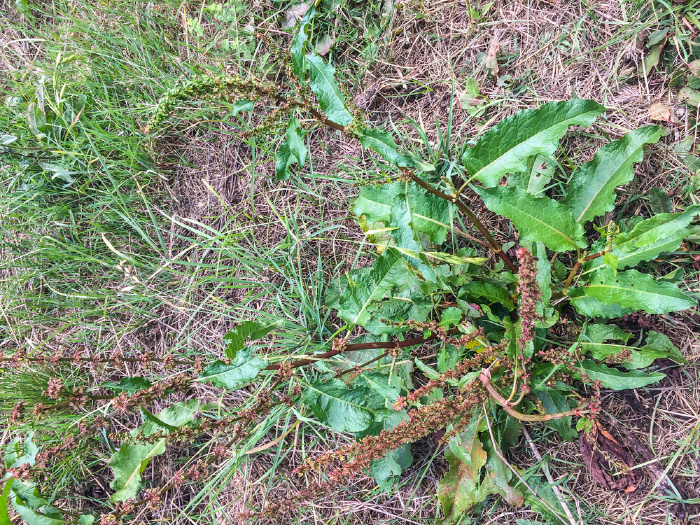
Curly dock is also called yellow dock. The leaves can be eaten raw when they are young, but need to be cooked when they are older. The stems can be peeled and eaten raw or cooked.
Additionally, the seeds can be boiled, eaten raw, or roasted into a coffee. It’s recommended to only eat these in moderation.
Final Thoughts
We never know when things will really get out of hand. We never know when we may not be able to buy food to feed our families.
We never know when something could happen, but we can prepare for it. We can prepare by stocking up, researching, and learning how to survive without the convenience of a grocery store.
One of those ways is knowing which plants you can eat and which to stay away from. What other edible weeds have you tried? Share with me in the comments below! May God bless this world, Linda
Copyright Images: Purslane Vegetable Deposit photos_29755215_s-2019, Curly Dock Deposit photos_256444932_s-2019, Amaranth Depositphotos_325233460_s-2019, Mallow_Cheeseplants Depositphotos_357002414_s-2019, Chickweeds Depositphotos_251949780_s-2019, Red Clover Depositphotos_25633895_s-2019, Dandelions Depositphotos_3204320_s-2019, Lambs Quarters Chenopodium Lamb AdobeStock_118372450 by fedsax, Plantago Major Depositphotos_301462088_s-2019

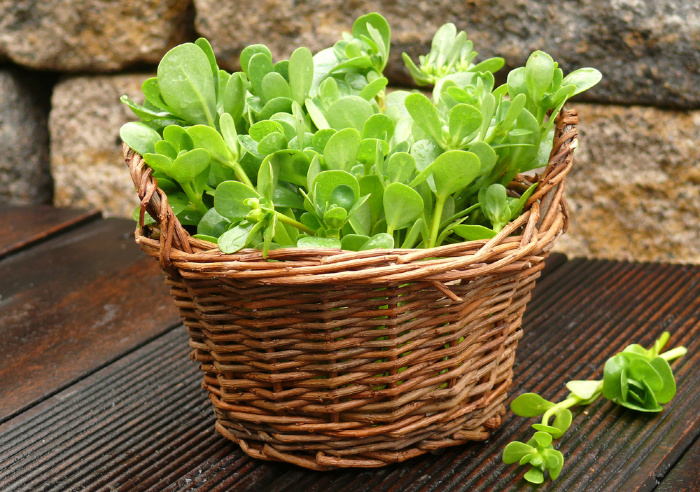

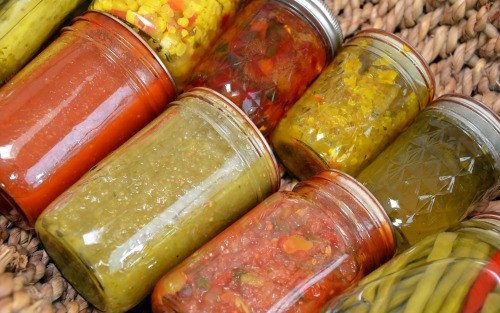
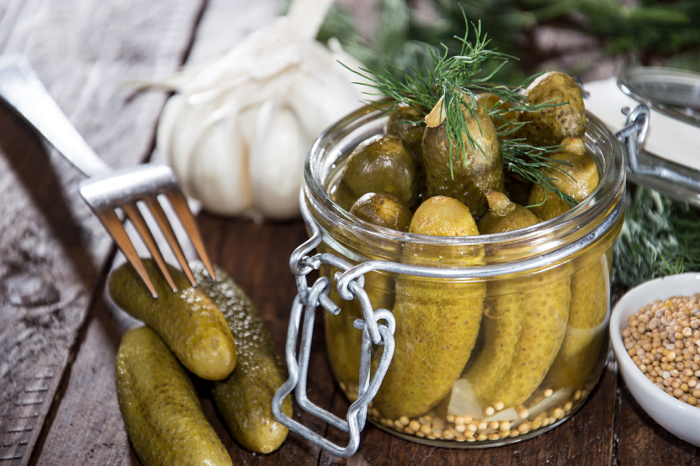
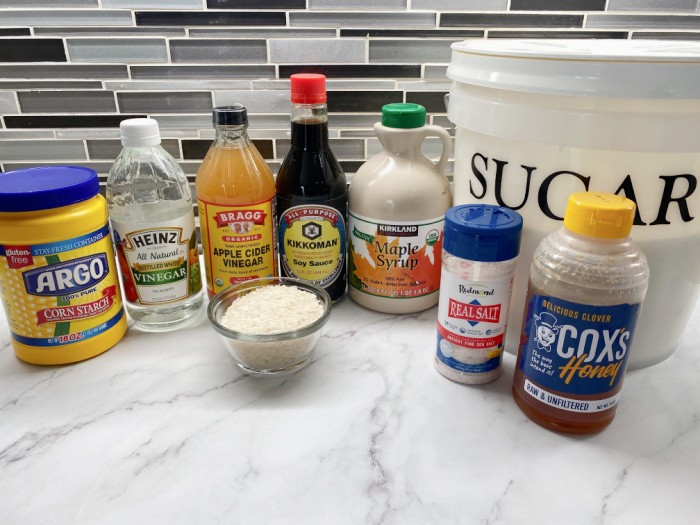
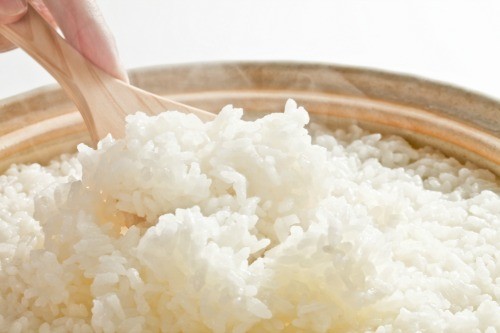
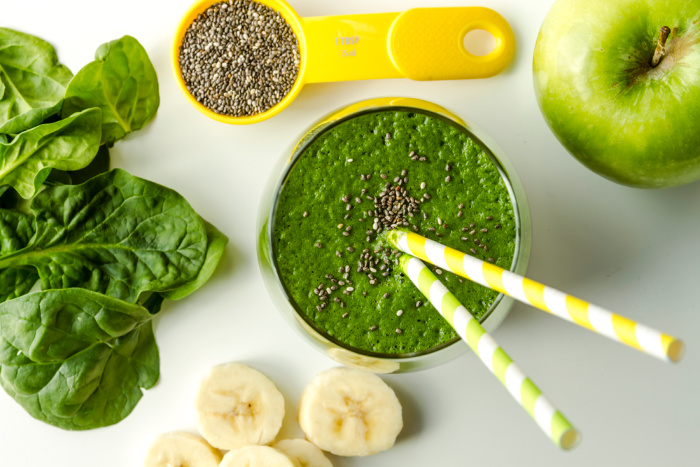
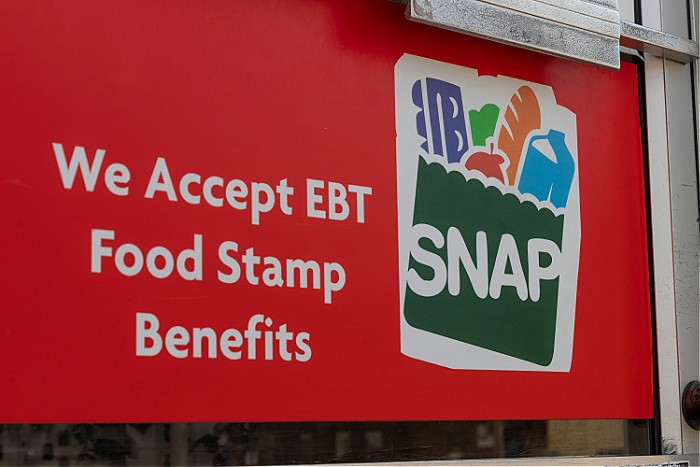














Linda, I appreciate your information on unusual edible plants. I hope to enjoy several that you mentioned. Is the flower of the mallow plant edible also? Last summer, we topped grilled burgers with fresh purslane – yummy!
HI Deborah, it’s my understanding that the stems, flowers, seeds, roots, and the leaves are edible. Yay!!! This is why I love writing this series. We can always find food if times get tough. I don’t picture myself going up in the hills to forage because there are plenty of weeds near my home or in my yard. Now, I need to try Purslane on my burgers!!! Thanks for the tip! Linda
Deborah ~
Yes the flower is edible on the mallow plant.
I would highly suggest you purchase a book of your local fauna or other book on foraging for wild edibles. The two I rely on where I live: Pacific Northwest Foraging by Douglas Deur – great photos and descriptions; and Wild Remedies-How to Forage Healing Foods and Craft Your Own Herbal Medicine by Rosalee De La Foret and Emily Han – general book covering a wide variety of wild herbs but not specific to an area.
You can also find books in the library when they open back up but having your own to take out with you when you forage is of great benefit.
Linda ~
Great post.
I might suggest that you also include the Latin names for the plants. For example, for plantain, there are several varieties: Plantago Major; Plantago Lanceolata; Plantago Rugellii; Plantago Rhodosperma; Plantago Virginica and perhaps others.
A major reason to list the Latin names is because many common wild herbs (weeds if you will) have other common names depending on where you live. Plantain is a common name but it is also known as fleawort, ribwort and white man’s footprint (according to one of my herb books). And in my area, the most common Plantain is Plantago Major.
This is just a suggestion – might involve more research than you are willing to do.
Oh Leanne, I now remember you telling me the Plaintain Major. I used that Plaintain Major image. Changing it now. Thank you!! Linda
I love this post. I have often wondered. I saved this in my Pinterest. Thank you so much girl!
Hi Susan, thank you for your kind words! This is why I started this series, I want to know the edible weeds!! Linda
Yeah there’s a reason most this stuff ain’t sold in the stores.
It’s best covered with a can of chili.
Oh my gosh, Matt, now I have the giggles! The best comment EVER! Linda